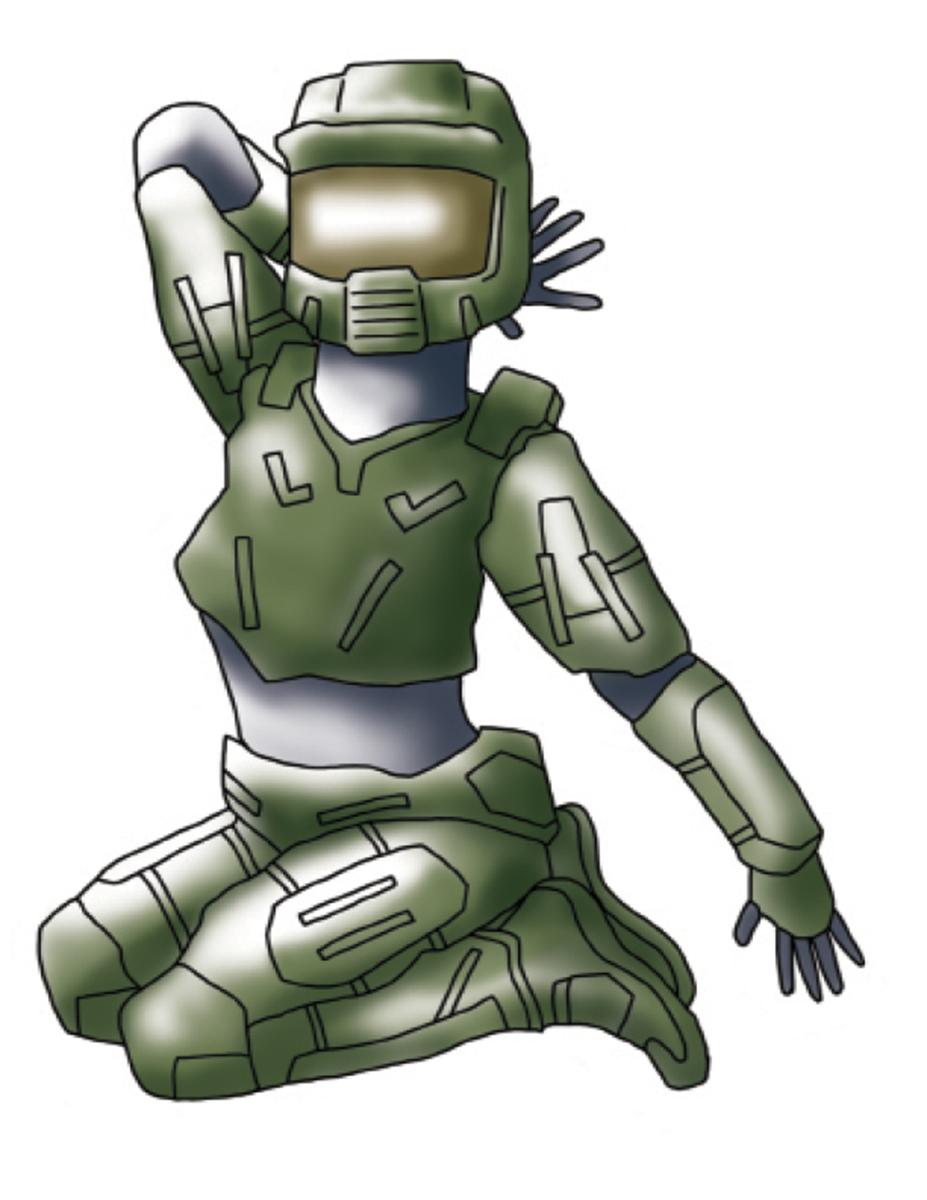By Eleni Pappelis
Illustrations by Austin Powe
The battle for gender equality is an ongoing controversy that only seems to be increasing with the influence of new media outlets. As a realm of pseudo-reality where players can actively participate in the enhanced digital domain, video games have landed in the middle of this debate.
Part of the controversy surrounds the over-sexualized ideals game characters present to audiences: Women, although now being portrayed in more central roles, are often designed as exaggerated, voluptuous, hyper-sexualized vixens, while “idealized hero” male characters showcase an unrealistically muscular physique. On the other hand, some argue that’s the name of the game. Despite the social backlash from an abundance of exaggerated virtual bodies in game design, there is one major reason why marketers and game developers might see success in sexualized features: profit.
According to the market research firm DFC Intelligence, it’s estimated that by 2017 the gaming industry will surpass an $87 billion global market value. In November 2012, the fourth installment of the popular Halo series brought in a record-setting $220 million the day of its release. After attracting an estimated 4 million players who accumulated 31.4 million hours of game play in the first five days after its release, Halo 4 was named one of the top-rated video games of 2012.
The science fiction, first-shooter game experience, now produced by 343 Industries, is centered on the cybernetically enhanced soldier known as Master Chief Petty Officer John-117. He is a cool, silent protagonist whose primary role is “protector.” Master Chief’s female companion, Cortana, is an artificial intelligence hologram. The Cortana character, although portrayed as smart, has become increasingly sexualized through Halo’s four series installments. In Halo: Combat Evolved, the first game in the series, Cortana was androgynous, with cropped hair and few defined physical features. By Halo 4, Cortana’s figure is highly suggestive: Wide hips accentuate a narrow waistline, while her hair is longer and her breasts are more pronounced. And with the exception of the tattoo-like covering over her genitals and breasts, Cortana is nude.
Even before Cortana evolved into a hyper-sexualized character, the Halo franchise was widely popular among first-person shooter fans. Andy Sheridan, an employee at CD/Games Exchange in Eugene, Oregon, says he has been playing video games since he was old enough to hold a controller. Sheridan believes most games that are considered offensive contain sexual and/or violent content. “When you think about most of the people who play those games, they’re probably young men,” he says. “I’m not saying girls don’t play those games, but they’re probably appealing to their audience. Sex sells. I think that’s been proven. I think it’s definitely something that should be changed though.”
Although the sexualized evolution of video game characters like Cortana may appear to promote stereotypes, these enhancements can also create a more dynamic gaming atmosphere. Higher quality graphics are part of what appeals to game consumers, and competitive industry standards are being set higher every year. Nintendo’s Metroid, which began as a two-dimensional single-player narrative, has experienced this evolution firsthand.
This action-adventure game chronicles Samus Aran, a young female bounty hunter, who must conquer space pirates trying to control the Metroids, artificial organisms that can be transformed into bioweapons. Twenty-seven years after its release in 1986, Metroidwas recognized in the Guinness World Records 2013 Gamer’s Editionas one of the earliest games with a female protagonist. Ms. Pac-Man was Samus’s only competitor at the time. Samus was and continues to be considered representative of a strong female protagonist character.
As the Metroid series progressed through its 11 installments between 1986 and 2010, much like many female video game characters, Samus was shown in more revealing clothing. Originally, Samus wore a cannon- and gun-fitted “Power Suit.” With the 2004 release of Metroid: Zero Mission, the sixth segment in the series, Samus’s sexualization culminated with the introduction of a form-fitted “Zero Suit.” At first, the suit was worn under her Power Suit, and each suit had its own benefits in game play. But now, Samus goes through large segments of the game wearing only the skintight Zero Suit.
In 2012, women and men took to Twitter to discuss sexual objectification in the gaming industry under the hashtag “#1reasonwhy.” The discussion was kicked off with a tweet from a Kickstarter employee, Luke Crane, who asked why so few women create video games. The #1reasonwhy movement brought about collaboration among game developers, critics, and players in attacking misogyny within the gaming industry. Many responses placed the blame for female game design objectification on male game developers, and several critics cited negative portrayals of women as an explanation for women’s lack of interest in video games. Indie role-playing game designer Elizabeth Sampat (@twoschooters) responded, “Every post-release positive review I’ve seen of games I’ve designed/published has couched praise for it/me in sexual innuendo #1reasonwhy.”
Aside from the attack on the gaming industry, the hashtag also began generating dialogue outside the social media site. In the Forbes article, “The One-Sided Problem of Oversexualization in Video Games,” technology contributor Paul Tassi posits the question: “Is it even possible for a male video game character to be a sex object?”
Tassi centers his argument on the typical archetypal male hero whose anatomy he says represents “the pinnacle of human perfection.” A character, he adds, that embodies the ideal male physique, accentuated with “hulking and chiseled abs and broad shoulders,” and is similar in effect to hyper-sexualized female characters. Tassi points out that as female characters’ shrinking waistlines and ever-growing breasts become more scantily clad, male characters have also undergone physical changes—the only difference is females are seen as objectified and males aren’t.
When making the comparison, Tassi cited games such as Soul Caliber, a 3-D fighting game. Much like Halo’s Master Chief and Cortana, the features of Soul Caliber’s characters are exaggerated. But unlike Master Chief, whose body is covered in armor, Soul Calibur’s male protagonist, Misturugi, is shirtless. Tassi describes Misturugi as a “Samurai warrior that would likely make many women swoon if he was a flesh and blood man.” Although Tassi admitted Soul Caliber’s hero is idealized, he seems certain that if Misturugi acted out suggestive poses like his female companion, the result would fall flat, possibly even striking audiences as comedic.
According to the Entertainment Software Association, “Forty-seven percent of all players are women, and women over 18 years of age are one of the industry’s fastest growing demographics.” Some franchises, such as BioWare’s Mass Effecttrilogy, have already begun responding to stats like these by moving in a gender-neutral direction—even if still highly sexualized—that could eventually quiet the stereotype debate. Regardless of whether game developers choose to portray more realistic characters in the future, Sheridan says video games shouldn’t influence someone’s outlook on reality. His opinion on sexism in the video game industry is simply this: “If you’re a stable person, you should be able to draw a line between what’s fiction and what’s reality.”
SUBHEAD: Advances in the digital domain fuel the gender equality debate
Battle of the Sexiest
Ethos
March 31, 2013
0
More to Discover









